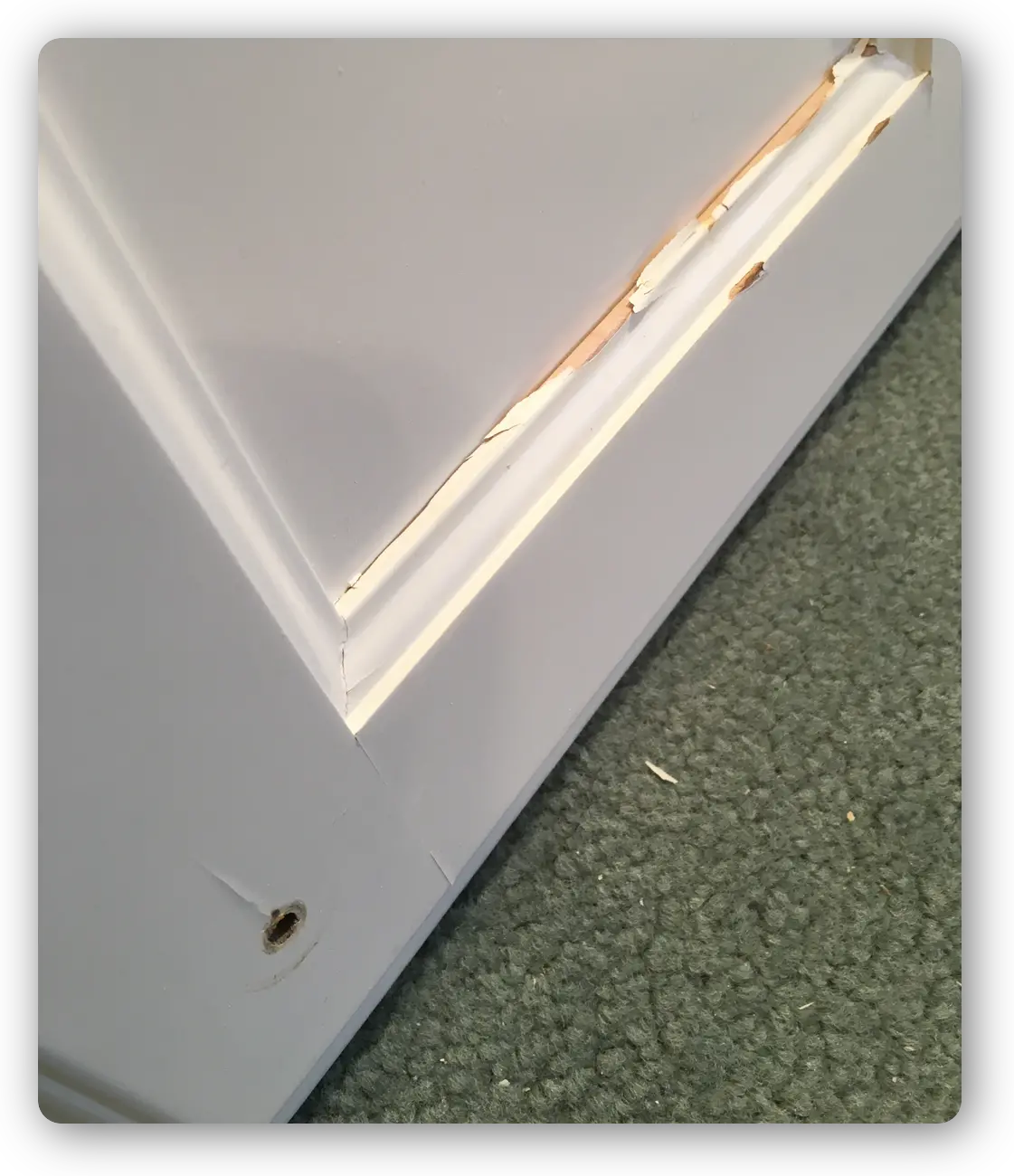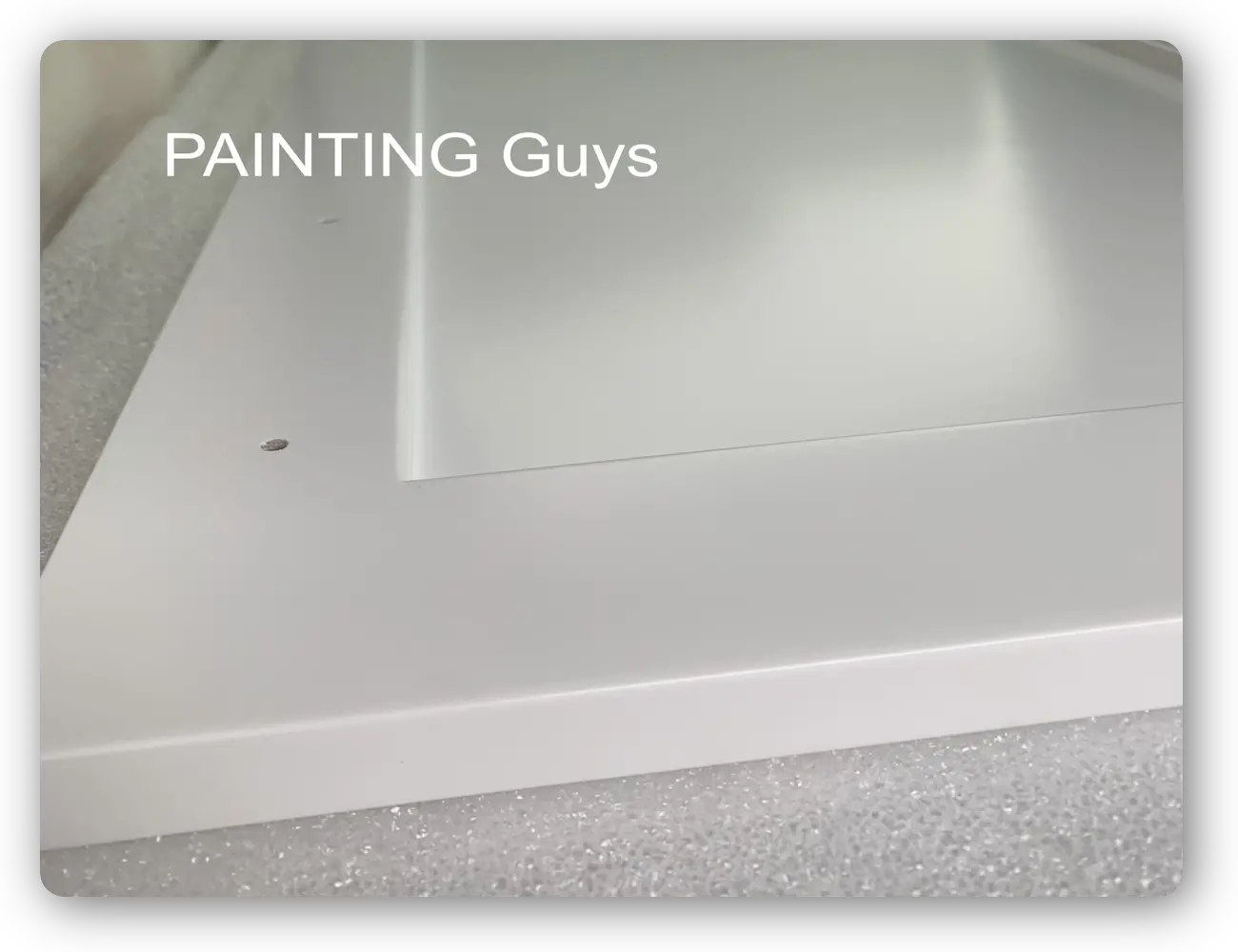Which is better, Lacquer, pre- or post-catalyzed lacquer (epoxy formula) or paint?
Below is an example of why we don’t use pre- or post-catalyzed lacquer (epoxy formula). Example of a pigment lacquer cabinet door finish failing only after a few years. Pre or post-catalyzed lacquer (epoxy formula) fails like the rest of the finishes, especially if they weren’t primed properly.
Image

When it comes to refinishing older cabinets in modern colors, we choose high-quality Acrylic paint for a variety of reasons:
- Lacquer is extremely toxic
- Acrylic paint is low to zero VOC
- Pre- or post-catalyzed lacquer (epoxy formula) is brittle and cracks easier at the corner joints with expansion.
- Acrylic paint is far more flexible!
- Lacquer yellows
- Acrylic paint does not yellow and looks amazing.
- Lacquer including catalyzed lacquer touch-ups is impossible to seamlessly colour match because lacquer always yellows over time. Good luck getting any company to touch up catalyzed lacquer a year later. $$$
- Acrylic paint is easy to touch up and does not yellow or degrade in the same negative way lacquer does.
- Lacquer is highly explosive and toxic making it terrible to use onsite around static, gas furnaces, children, the elderly and the general public.
- Acrylic paint is a water base product very low in VOC, which is never a concern.
- Lacquer requires special zoning regulations to spray and requires fire extinguishing and venting systems which all end up costing clients more money for nothing gained
- Acrylic paint is safe and sprays beautifully with a glass-like finish and is affordable.
It’s a myth pre- or post-catalyzed lacquer (epoxy formula) is more durable than paint. We’ve been spraying acrylic paint on cabinets for years and have hundreds of happy clients. Our finishes are beautiful, glass smooth, hard enough and last for years.
Image

Acrylic paint is our choice when it comes to kitchen cabinet refinishing and painting.
lacquer vs paint - kitchen cabinet painting